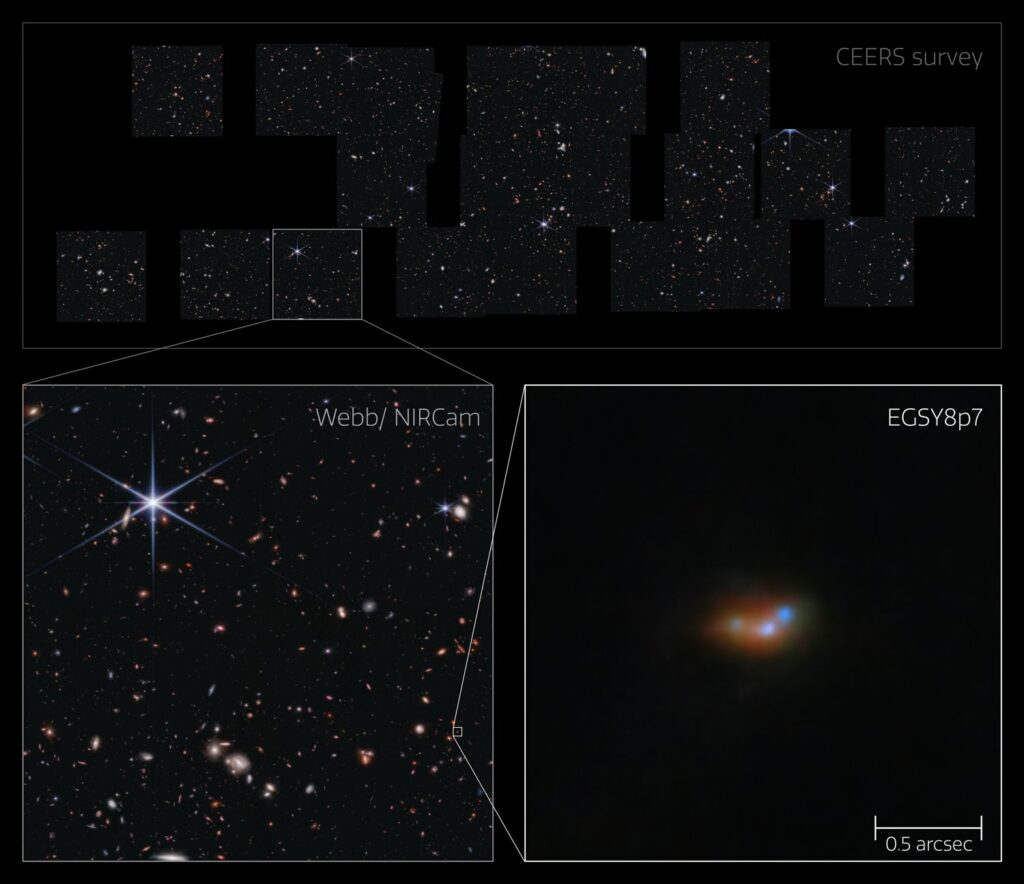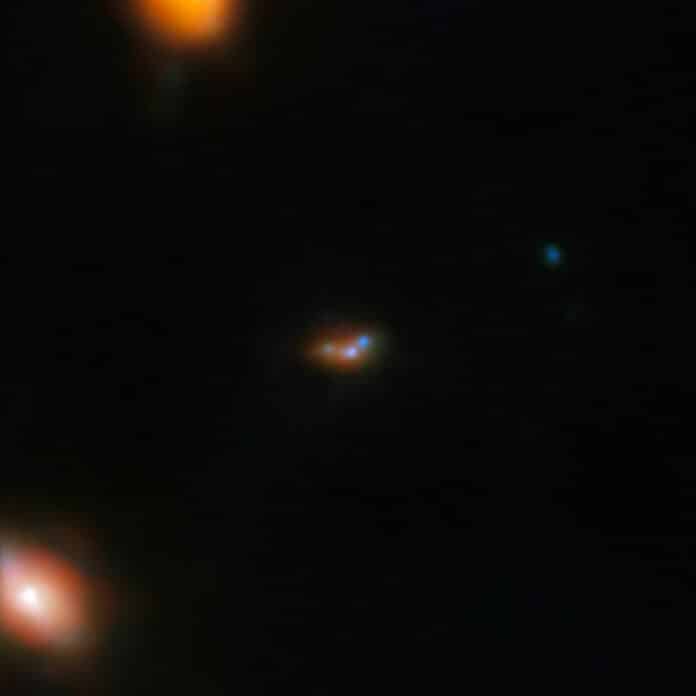Astronomers have long been puzzled by the detection of light from hydrogen atoms in the very early universe. According to theory, the abundant Lyman-α emission released in the earliest galaxies should not be observable today, as it should have long since been absorbed or scattered by the immense amount of neutral hydrogen gas that surrounded the areas of active star formation. However, examples of very early hydrogen emission have previously been observed by astronomers, presenting a mystery: how is it that this hydrogen emission is being observed?
A team of international astronomers has now solved this mystery, thanks to the unmatched resolution and sensitivity of the NASA/ESA/CSA James Webb Space Telescope’s NIRCam instrument. The team found small, faint objects surrounding the very galaxies that show the ‘inexplicable’ hydrogen emission. In conjunction with state-of-the-art simulations of galaxies in the early universe, the observations have shown that the chaotic merging of these neighboring galaxies is the source of this hydrogen emission.
The very earliest galaxies were sites of vigorous and active star formation and, as such, were rich sources of a type of light emitted by hydrogen atoms called Lyman-α emission. However, during the epoch of reionization, an immense amount of neutral hydrogen gas surrounded these areas of active star formation, known as stellar nurseries. Furthermore, the space between galaxies was filled by more of this neutral gas than is the case today. The gas can very effectively absorb and scatter this kind of hydrogen emission, so astronomers have long predicted that the abundant Lyman-α emission released in the very early universe should not be observable today.
“One of the most puzzling issues that previous observations presented was the detection of light from hydrogen atoms in the very early universe, which should have been entirely blocked by the pristine neutral gas that was formed after the Big-Bang. Many hypotheses have previously been suggested to explain the great escape of this ‘inexplicable’ emission,” said researcher Callum Witten, principal investigator on the new study.

The team’s breakthrough came thanks to Webb’s extraordinary combination of angular resolution and sensitivity. The observations with Webb’s NIRCam instrument were able to resolve smaller, fainter galaxies that surround the bright galaxies from which the ‘inexplicable’ hydrogen emission had been detected.
These smaller galaxies were interacting and merging with one another, and Webb has revealed that galaxy mergers play an important role in explaining the mystery emission from the earliest galaxies.
The team used state-of-the-art computer simulations to explore the physical processes that might explain their results. They found that the rapid build-up of stellar mass through galaxy mergers both drove strong hydrogen emission and facilitated the escape of that radiation via channels cleared of the abundant neutral gas. So the high merger rate of the previously unobserved smaller galaxies presented a compelling solution to the long-standing puzzle of the ‘inexplicable’ early hydrogen emission.
The team is planning follow-up observations with galaxies at various stages of merging to continue to develop their understanding of how the hydrogen emission is ejected from these changing systems. Ultimately, this will enable them to improve our understanding of galaxy evolution. With the James Webb Space Telescope’s unprecedented capabilities, scientists will continue to unveil new mysteries and deepen our understanding of the universe.
Journal Reference
- Witten, C., Laporte, N., Sijacki, D., Yuan, Y., Haehnelt, M. G., Baker, W. M., Dunlop, J. S., Ellis, R. S., Grogin, N. A., Illingworth, G., Katz, H., Koekemoer, A. M., Magee, D., Maiolino, R., McClymont, W., G., P., Puskás, D., Santini, P., & Simmonds, C. (2024). Deciphering Lyman-α emission deep into the epoch of reionization. Nature Astronomy, 1-13. DOI: 10.1038/s41550-023-02179-3
